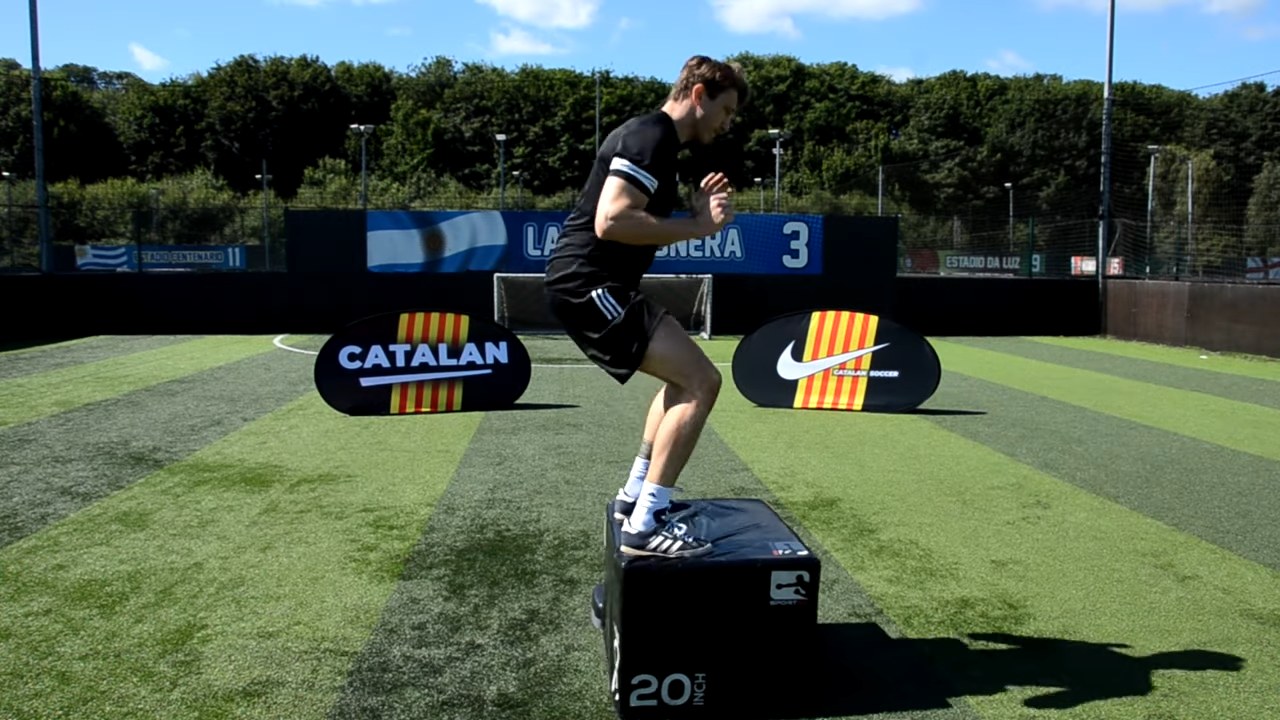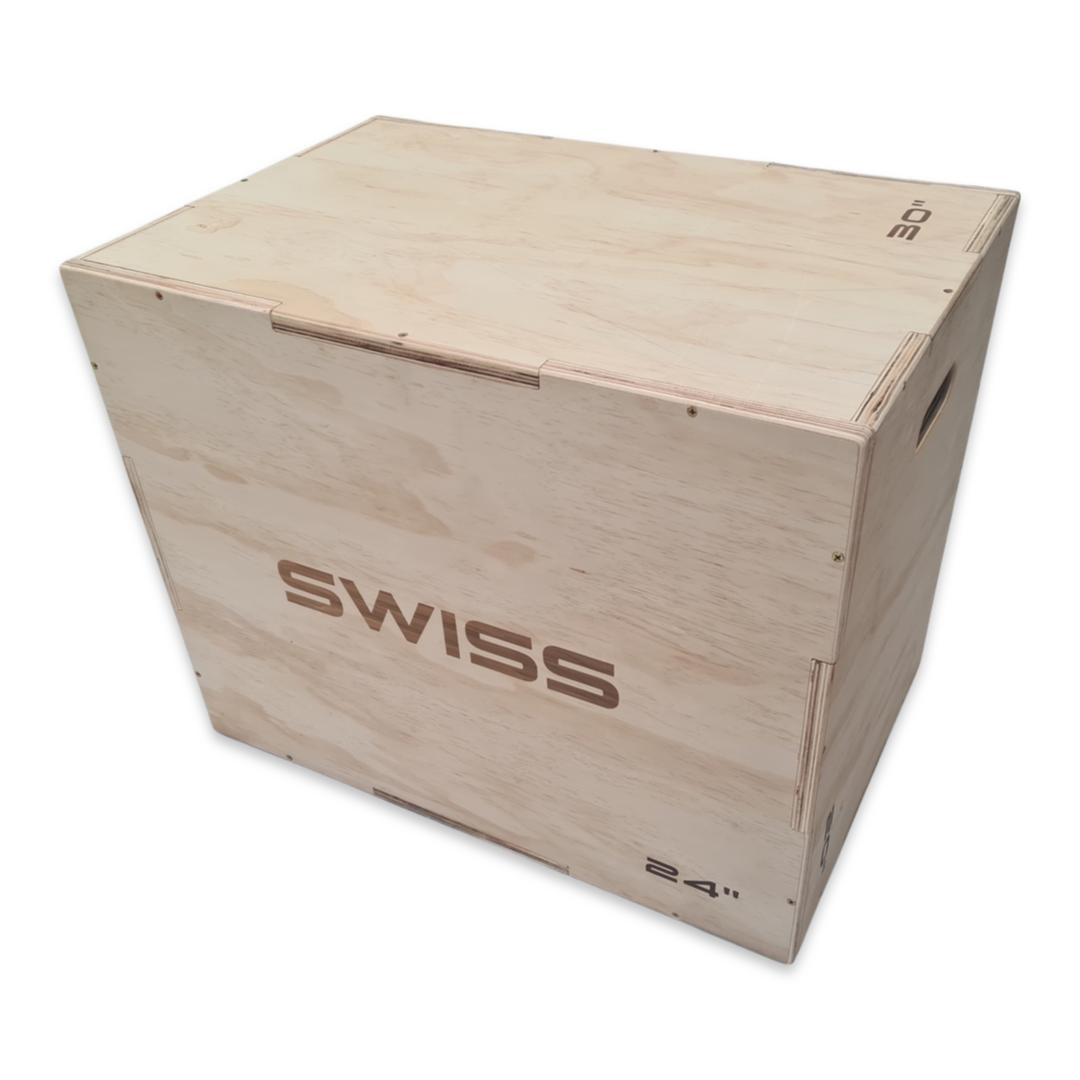
Plyo Box Workouts for Strength, Speed, and Balance
Share
"Strength does not come from physical capacity. It comes from an indomitable will." — Mahatma Gandhi.
When it comes to leveling up your fitness, few tools are as sneaky powerful as the plyometric box. In fact, a good plyo box can unlock explosive strength, razor sharp balance and serious speed gains—all in one neat package.
Incorporating various plyo box exercises can contribute to achieving broader fitness goals such as strength, conditioning and overall performance.
In this guide we'll dive deep into plyo box workouts, how you can use them to build athletic power, balance and master your body.
Table of Contents
"Strength does not come from physical capacity. It comes from an indomitable will." — Mahatma Gandhi.
When it comes to leveling up your fitness, few tools are as sneaky powerful as the plyometric box. In fact, a good plyo box can unlock explosive strength, razor sharp balance and serious speed gains—all in one neat package.
Incorporating various plyo box exercises can contribute to achieving broader fitness goals such as strength, conditioning and overall performance.
In this guide we'll dive deep into plyo box workouts, how you can use them to build athletic power, balance and master your body.
What is Plyo Box Training
Plyo box training is a dynamic form of exercise that uses a plyometric box, also known as a jump box or plyo box, to perform various plyometrics.
These exercises such as box jumps and burpee box jumps are designed to increase muscle power, speed and endurance.
The beauty of plyo box training is its versatility; it can be tailored to suit different fitness levels from beginners to advanced athletes and can be added to any workout routine including strength training and cardio exercises.
The benefits of plyo box training are numerous. By incorporating plyo box exercises like box step ups and box jump overs into your routine you can develop explosive power and overall physical fitness.
Whether you want to boost your athletic performance or just want a better workout, plyo box training is a versatile and effective solution.
What is a Plyometric Box
Before we get started (pun intended) let's define it.
A plyometric box is a simple yet effective piece of equipment used for jumping, stepping, pushing and pulling exercises. They come in 2 main types: wooden and soft. Each has its advantages depending on your goals and preference.
- Wooden boxes are sturdy and reliable.
- Plyometric Soft boxes are safer and more forgiving—perfect for beginners.
Plyometric boxes are a must have fitness equipment for various training routines.
Boxes for plyometrics serve a huge range of purposes beyond just jumping. They're your platform for strength, conditioning, rehab and even serious fat loss!Plyo box workouts are versatile. Here's why they're a must have in any serious training program:
- Explosive Power: Train your fast twitch muscle fibers to produce more force, faster.
- Balance and Coordination: Movements challenge stabilizer muscles, improve control.
- Functional Strength: Build real world strength that translates to everyday activities. Plyo box exercises engage the entire body including legs, arms and core.
- Athletic Conditioning: Perfect for sport specific training like sprinting, jumping and rapid direction changes.
- Fat Loss and Cardiovascular Health: High intensity movements burn calories and strengthen your heart. These exercises challenge the cardiovascular system, improve endurance and allow for rapid bursts of speed.
Choosing the Right Plyo Box
Choosing the right plyo box is crucial to maximize the benefits of your workouts. The ideal height for a plyo box is between 12-24 inches depending on your fitness level and goals. Beginners may find a 12 inch box more manageable while more advanced athletes may prefer a 24 inch box to challenge themselves.
The material of the plyo box is also important. Plyo boxes can be made of wood or high density foam, each offering different levels of sturdiness and support. Make sure the box can support your body weight and has a non slip surface to prevent accidents during your workout. Also consider the width of the box; a standard box width is 16-18 inches providing enough space for various exercises.

Setting Up Your Plyo Box Workout
Setting up your plyo box workout starts by placing the box on a stable surface like a gym floor or a large mat to ensure safety. Place the box at a comfortable height and distance from you, with your feet hip width apart. Start with a warm up routine like jumping jacks or mountain climbers to get your muscles ready for the workout.
Next choose the plyo box exercises you want to do like box jumps, step ups or burpee box jumps. Start with lower box heights and gradually increase the height as you get more comfortable and confident with the exercises.
Throughout your workout focus on proper form and technique—engage your core, bend your knees and keep your arms straight to maximize effectiveness and prevent injury.Finally, don't forget to cool down after your workout to prevent muscle soreness and promote recovery. Follow these steps and you'll have a safe, effective and enjoyable plyo box workout.
Essential Plyo Box Exercises to Build Strength
Master these plyo box exercises and you'll be on your way to a stronger, more powerful you. These exercises can be done to improve balance, coordination and functional strength.
Box Squats
The box squat teaches perfect squat form, glute activation and lower body strength.
How to do it:
- Stand in front of the box, feet shoulder width apart.
- Hinge at the hips and lower yourself down until your glutes touch the box. Descend into a quarter squat position to generate force for the upward movement.
- Drive back up through your heels, squeeze your glutes at the top.
Top Tip: Choose a box height that allows you to sit with your thighs parallel to the ground.
Glute Bridges
An underrated gem for glute and hamstring development!
How to do it:
- Lie back against the box so it's supporting your upper shoulders.
- Feet flat on the floor, drive your hips upward until your thighs and torso are in a straight line. The rear leg plays a crucial role in providing stability during this movement.
- Lower slowly and repeat.
Want more challenge? Rest a barbell or dumbbell across your hips.
Explosive Plyo Box Workouts for Speed
Speed is all about rapid force production. These movements demand it—and build it. Box jump exercises are very versatile and effective making them suitable for both beginners and experts in plyometric workouts.
Incorporate these exercises into your routine and you'll see a significant increase in your vertical jump performance making them a key component of leg and conditioning sessions.
Plyo Box Jumps
A classic box exercise, this is perfect for training explosiveness.
How to do it:
- Stand a short distance from the box.
- Make sure you're in the correct starting position to maintain safety and effectiveness.
- Drop into a shallow squat.
- Swing your arms and jump onto the box.
- Land softly, knees bent. Step down and repeat.
Pro Tip: Start with a lower box and gradually increase the height over time!

Single-Leg Box Jumps
This increases unilateral power and balance, pushing your lower body strength to the limit.How to do it:
- Stand on one foot. Doing the exercise with one leg increases balance and coordination which is beneficial for daily movements and sports training.
- Explode and land softly on the same leg on top of the box.
- Step down and switch sides.
Patience is key here—single-leg control takes time to master.
Plyo Box Workouts for Balance and Coordination
Building balance doesn't just improve athleticism—it also prevents injuries. Many athletes overlook the importance of training for stability in the lower body especially when performing exercises that involve landing on one foot.
Doing movements correctly is key to achieve optimal results, increase endurance, strength and overall effectiveness of the workout.
Lateral Box Jumps
Increase your side-to-side strength and coordination.
How to do it:
- Stand beside the box.
- Jump onto the box laterally, (sideways) land with both feet.
- Hop forward off the far side of the box to increase workout intensity.
- Step down and repeat on the other side.

Start slow. Focus on clean landings before trying to increase speed.
Tabletop Crunches
A great move to fire up your core while balancing.
How to do it:
- Sit on top of the box with your knees bent and feet off the floor.
- Lean back slightly. This exercise also engages the upper body for added stability.
- Crunch your knees towards your chest while engaging your core.
This simple movement delivers major core activation—you'll feel the burn fast!
Plyo Box Workouts FAQs
Are plyo box workouts good for beginners?
Yes! Beginners can start with low-impact moves like box squats, incline pushups and step-ups. Choose a lower box height and focus on mastering form before progressing. It's also important to become comfortable with standard box jumps before moving on to more advanced plyometric exercises as this builds strength and prevents injury.
How high should my plyo box be?
It depends on your fitness level and the exercise. For box jumps, beginners start with 12-16 inches. Advanced athletes go up to 30 inches or higher.
Also, maintaining a distance of two feet from the box is crucial for proper form and stability during exercises.
Can I use plyo box workouts to lose weight?
Yes! Exercises like jump-overs, single-leg box jumps and weighted box jumps are high intensity calorie burners when combined with proper nutrition.
Also plyo box exercises don't require a loaded barbell making them a lower impact way to build lower body power.
Soft or Wooden plyo box?
Each has its advantages:
-
Soft: Safer for high jumps and beginners

-
Wooden: Affordable and durable

Choose based on your training style and injury history and budget.
How often should I do plyo box exercises?
2-3 times a week is ideal for most people. Allow at least 48 hours between intense sessions to recover properly.
Plyo box exercises contribute to building power and overall athleticism.
Conclusion
The humble plyometric box is more than just a jumping platform. With the right plyo box workouts you can build explosive strength, balance and power in everything you do.
Add these exercises to your weekly routine and you'll see and feel the results. Whether you're using boxes for plyometrics or classic box exercises the possibilities are endless!
Ready to get started? Grab a box and get moving!
